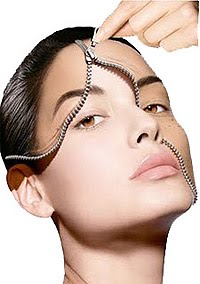The Lightening Skin website brings you another skin-care article...
Age spots are also referred to as liver spots, sun spots, or lentigo. They are flat, tan, brown, or dark brown spots that appear on the body of aging people, and are especially fond of the area on the back of the hands – although they can also appear on forearms, neck, chest, legs and the face. As you age, the skin is less able to regenerate from sun exposure and liver spots become very common, particularly in those who enjoy being out in the sunshine. They have also been known to proliferate in some individuals under emotional distress.
In the vast majority of cases, liver spots pose no threat and no treatment is necessary. However, in a very small number of cases, they have been known to obscure the detection of skin cancer.Age spots are also referred to as liver spots, sun spots, or lentigo. They are flat, tan, brown, or dark brown spots that appear on the body of aging people, and are especially fond of the area on the back of the hands – although they can also appear on forearms, neck, chest, legs and the face. As you age, the skin is less able to regenerate from sun exposure and liver spots become very common, particularly in those who enjoy being out in the sunshine. They have also been known to proliferate in some individuals under emotional distress.
By their very nature, age spots are collections of melanin (the dark natural pigment of the skin), in the uppermost layer of the skin - the epidermis. Melanin is produced by special cells in the skin called melanocytes. Age spots are flat and they range in size from that of a small pea to a dollar coin. They usually have round outlines and irregular borders. Age spots themselves are not malignant but they do increase the risk of skin cancer to some degree.
The most obvious cause of age spots is overexposure to sun. Prolonged exposure to sunlight activates the melanocytes to produce excess of melanin. Exposure to ultraviolet light is especially more likely to cause age spots. Other causes also play their role in forming age spots - these include poor diet (especially one that is rich in fats), lack of exercise or physical activity, poor liver function and autointoxication.
Some people consider these spots unsightly and wish to have them removed for cosmetic reasons. Removal of these spots is based on the fact that they increase the risk of skin cancer, which, like age spots, is associated with overexposure to solar radiation. Some of the removal treatment methods include freezing, using acids, skin sanding and the use of electric needles. Laser therapy is now being used with greater success than these methods because the laser targets the spots more precisely and does minimum damage to the surrounding skin. In addition, laser treatment is less painful and promises a fast recovery.
For people with darker skin kojic acid is used as an alternative treatment solution. Vitamin C products and mandelic acid products are also used to treat age spots. Check with your physician or dermatologist to find out more about preventing and removing age spots.












